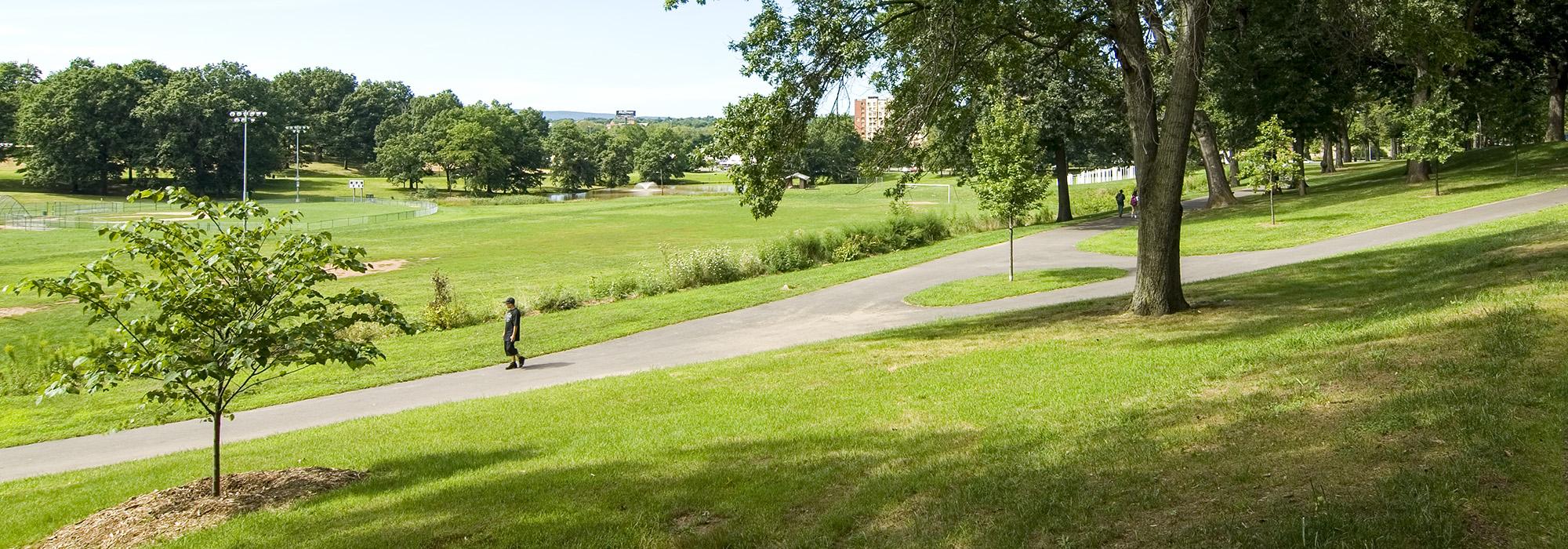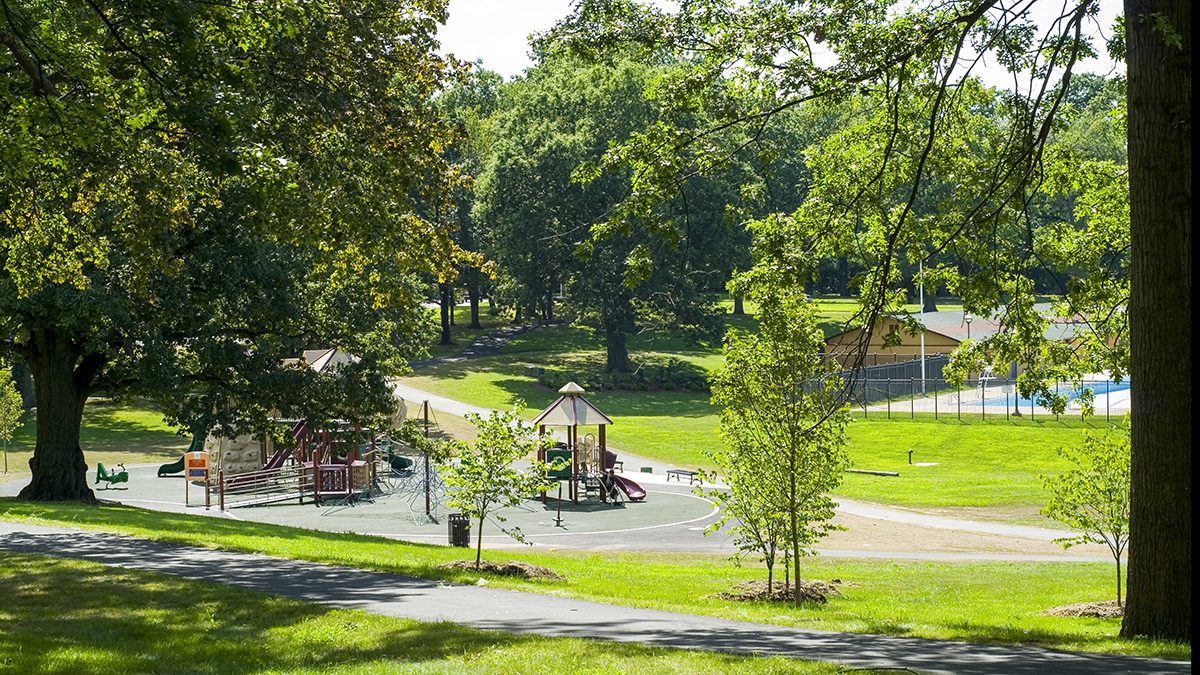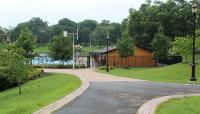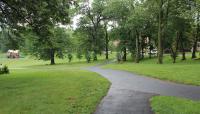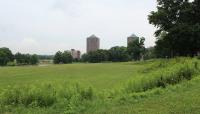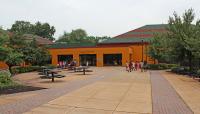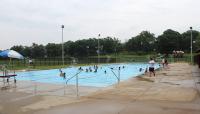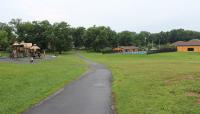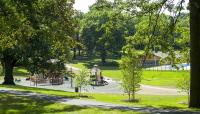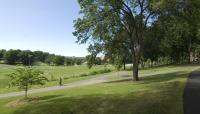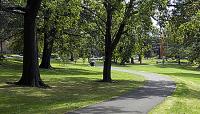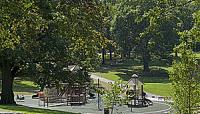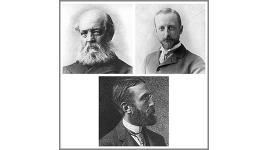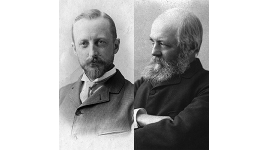Landscape Information
In 1894 manufacturing magnate Albert Pope donated 73 acres of land to the City of Hartford as parkland. Two subsequent land acquisitions increased the park’s size to 90 acres. The firm Olmsted, Olmsted & Eliot completed a design for the park in 1903. Situated along Park River, the park comprises three segments divided by Park Street: Hollowmead, Bankside Grove, and Pope Park North. The firm transformed Hollowmead’s sloping terrain into a series of meadows. The largest clearing, featuring a man-made pond, was encircled by sparsely planted trees that allowed views into the park from bordering row houses, while two smaller meadows overlooking the river were given more seclusion. High Mall, a formal overlook with a fountain, sunken garden, and pergola, afforded views of the countryside, while the densely planted Hillside Grove provided meandering walks along the river. North of Park Street, the shaded Bankside Grove served as a pedestrian connection between Hollowmead and Capitol Avenue, a major thoroughfare. Pope Park North, a four-acre lot adjacent to Park Terrace, was designated a recreational space, complete with tennis courts and a playground.
Although traces of Olmsted, Olmsted & Eliot’s original design are still evident in the Hollowmead’s open lawns and densely planted hillsides, many of the plan’s central elements, including the High Mall’s gardens, have been replaced by recreational fixtures, while Park River was moved and buried in the 1970s. In 2000 the landscape architecture firm Carol R. Johnson and Associates partnered with Friends of Pope Park to restore and rehabilitate much of Olmsted, Olmsted & Eliot’s design, removing Pope Park Drive, which had bisected Hollowmead, and introducing new circulation systems. In 2017 the landscape architecture firm Shadley Associates developed a master plan for the Bankside Grove that sought to connect the park with the Park River Greenway, improve existing pathways, create new garden spaces, and introduce water retention areas.



